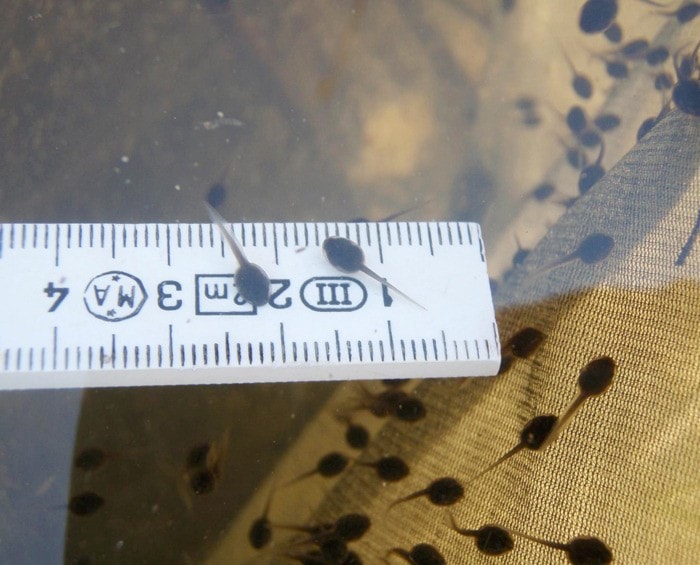Finding egg masses for the endangered northern leopard frog (Lithobates pipiens) is not an easy task. Once widespread throughout southeastern B.C., there are now only two known wild breeding areas remaining in the province. So when biologists from the Fish and Wildlife Compensation Program (FWCP) located 17 egg masses during the spring breeding season of 2011 — the most since the Northern Leopard Frog Recovery Project got underway in 1996 — they were ecstatic.
This is one of many projects the FWCP has led on behalf of its program partners BC Hydro, the province of B.C. and Fisheries and Oceans Canada, who work together to conserve and enhance fish and wildlife in British Columbia. Approximately one-third of FWCP projects focus on species-at-risk, such as the northern leopard frog, which is federally endangered and red-listed provincially.
“Typically we only find between six and nine egg masses each year, which really gives an idea of the fragility of the population in the Columbia region,” says FWCP contract biologist Barb Houston. “So to find 17 is excellent news.”
There is only one remaining population of northern leopard frogs in all of British Columbia and it is at the Creston Valley Wildlife Management Area (CVWMA). In addition, there is one small reintroduced population at Bummers Flats Conserva-tion Area north of Cranbrook that was created by releasing tadpoles and juvenile (metamorph) frogs raised from eggs collected at CVWMA in 2005.
“We had to find a way to augment the population of Northern Leopard Frogs at the Bummers Flats site without compromising the viability of the source population at CVWMA,” said Purnima Govindarajulu, chair of the northern leopard frog recovery team, with the Ministry of Environment. “The northern leopard frog recovery team set a threshold of ten egg masses before eggs could be collected from CVWMA for release at Bummers Flats. Therefore, this year we were able to take a portion from each egg mass laid after the threshold of 10 was reached, and move about 5,000 eggs or tadpoles to help the population at Bummers Flats.”
Also a total of 50 tadpoles, five each from 10 egg masses, were moved to a captive assurance colony at the Vancouver Aquarium. The aquarium now has a total of 109 northern leopard frogs at different ages. It is hoped that the first captive breeding will occur at the aquarium in 2012.
“There is a real risk of provincial extinction, so finding sufficient egg masses that enable us to bolster the northern leopard frog population in the East Kootenay is very positive,” said John Krebs, FWCP crew lead in the Columbia region. “We haven’t had the luxury of doing that since 2005.
“And supplying Vancouver Aquarium with more tadpoles will help to ensure that it has a genetically diverse back-up population, should there be a complete collapse of the wild population in the Columbia region.”
Each egg mass contains between 1,000 and 4,000 eggs. Once an egg mass is found, it is enclosed in a fine mesh cage to protect it from predators. Only a small portion of each egg mass is used for translocation and those eggs or tadpoles that were moved to the East Kootenay are again protected by a mesh cage until the tadpoles are a couple of weeks old.
Many partners have helped the northern leopard frog recovery effort over the years, including FWCP, BC Hydro, Environment Canada, World Wildlife Fund, Columbia Basin Trust, FortisBC, Ministry of Environment, Selkirk College, CVWMA, Canadian Wildlife Federation, local First Nation groups, the Interdepart-mental Recovery Fund and the East Kootenay Conservation Program, Between 2001 and 2005, the FWCP and the northern leopard frog recovery team raised and released more than 25,000 northern leopard frogs.
“While the future of the northern leopard frog population in the province is far from secure,” added Krebs, “the fact that we were able to find a record number of egg masses bodes well for them. We hope that we will be able to deliver even better news in the years ahead.”
— FISH AND WILDLIFE COMPENSATION PROGRAM
